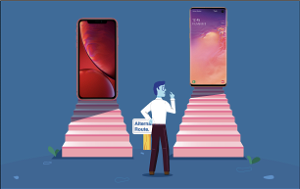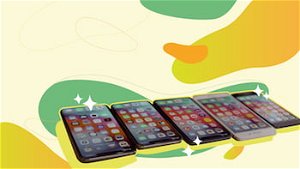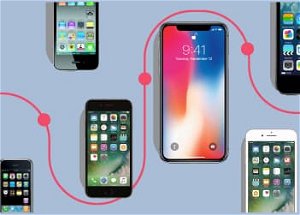
Whether you're an avid iPhone
fan or an Android enthusiast, you
likely have the release of the iPhone in 2007 to thank for the phone you enjoy using today.
In just over a decade, phones have transitioned from hefty little bricks designed mostly for calling to powerful pocket-sized computers capable of video chat, streaming video, high-end photography, gaming, and more.
Let's take a look at the evolution and history of the phone that introduced the world to the smartphone concept -- the Apple iPhone.
Editor’s Note: This post has been updated for 2022
A Timeline of iPhone History
The First iPhone (June 2007)
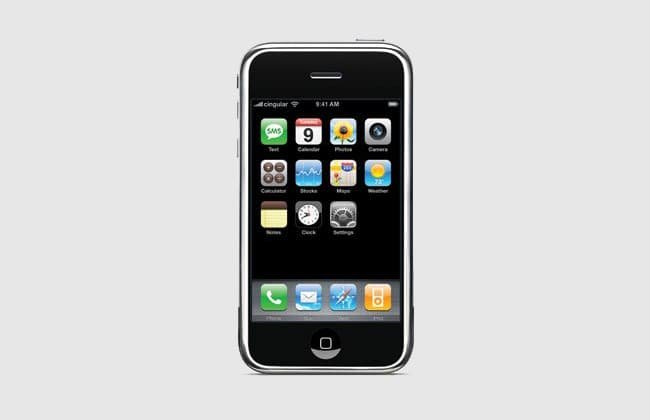
Release Date: June 29, 2007
Original Price: $499 to $599 with a contract
The original iPhone is responsible for smartphones as we know them today. By ditching the then-typical keypad for a touchscreen and adding advanced computer-like capabilities you couldn't find anywhere else, it established the standard for every smartphone that followed.
Steve Jobs boldly declared, "Apple is going to reinvent the phone." Though while he was right, the original iPhone was still a very different phone than what we use today. It had no third-party apps, no video recording, no GPS tracking, and no high-speed data access.
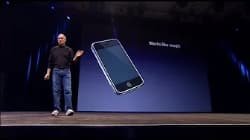
Watch: Steve Jobs iPhone 2007 Presentation (YouTube)
iPhone 3G (July 2008)

Release Date: July 11, 2008
Original Price: $199 to $299 with a contract
The second iPhone release is significantly closer to today's modern smartphones --- though it would be miles behind in terms of performance. Apple added 3G data support and GPS location.
This release also marked the launch of the iTunes App Store. This brought third-party apps and a range of new ways to enjoy your phone. Apple sold one million phones in the first weekend of the iPhone 3G's release.
iPhone 3GS (June 2009)
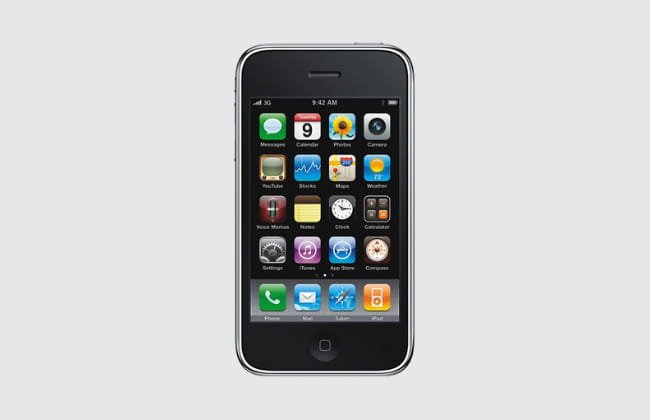
Release Date: June 19, 2009
Original Price: $199 to $299 with a contract
The iPhone 3GS was the first of many S releases to come. As more of an improvement to the existing iPhone 3G than a full replacement, upgrades included faster processing speeds, the ability to record video using the 3MP rear camera, and a built-in compass.
More importantly, the 3GS marked the first model to use Voice Control -- the system that would later go on to be Apple's Siri. In the end, the lack of major upgrades or updates left many reviewers skeptical of the 3GS.
iPhone 4 (June 2010)
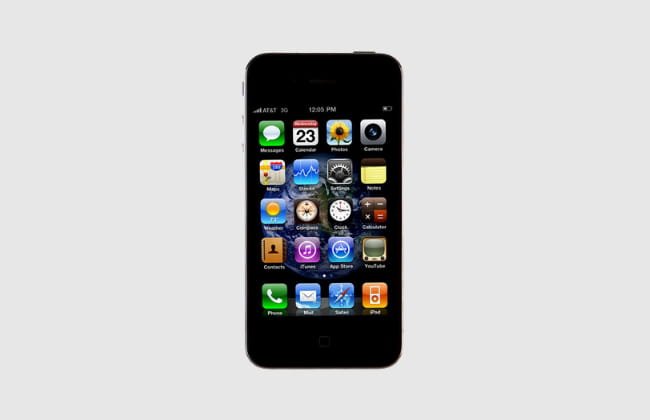
Release Date: June 21, 2010
Original Price: $199 to $299 with a contract
Shifting away from the thick, rounded design with the chunky chrome bezels used in the previous 3 iPhone releases, the iPhone 4 presented a new vision of what the iPhone could be. Steve Jobs noted it was the thinnest smartphone in the world when it released. The glass back and metal frame received criticism for breaking easily. However, this design is still popular with high-end phones today.
This release also marked the first release of a "Retina Display" on a mobile device. Other upgrades included a front-facing camera for Apple's FaceTime video chat service and CDMA variants for greater availability on US carriers.
iPhone 4S (October 2011)

Release Date: October 14, 2011
Original Price: $199 to $399 with a contract
The iPhone 4S debuted a range of new features that would become favorites among iPhone users, including Siri, iCloud, and iMessage. Like previous S variants, it also offered improved performance. The phone was also the first iPhone capable of recording 1080p video with its rear camera.
Unlike the 3GS, the 4S received praise from numerous media outlets and reviewers. By October 17, Apple announced they had sold more than 4-million phones. This was more than double the number of orders the iPhone 4 received in the same period after launch.
iPhone 5 (September 2012)
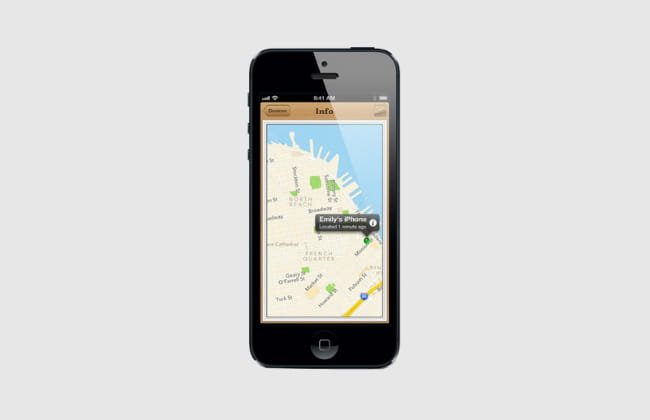
Release Date: September 21, 2012
Original Price: $199 to $399 with a contract or starting at $649 without a contract
The iPhone 5 was the first model to release in September -- a trend that continues to this day. Remaining in production for only 12 months, it was also one of the shortest-lived iPhone models. The phone saw numerous design updates, including a lighter aluminum frame and a new compact Lightning dock connector.
Perhaps more importantly, it was the first iPhone to support 4G LTE -- ushering in a new era of mobile broadband and changing the way we consumed media on our phones. It would go on to sell more than five million units in the three days following its release.
iPhone 5C (September 2013)

Release Date: September 20, 2013
Original Price: $99 to $199 with a contract or $550 without a contract
Touting the slogan "For the colorful," the iPhone 5C was the first budget-oriented modern iPhone. It switched the glass and aluminum design for a range of colorful polycarbonate (i.e. plastic) shells and offered comparable performance to the earlier iPhone 5 at a lower price.
Reviewers praised the phone for its durability and lightweight design. However, the 8GB model left limited space for users to install apps. According to Apple Insider, the phone stayed in the top three best selling phones in the US for three months following its launch.
iPhone 5S (September 2013)
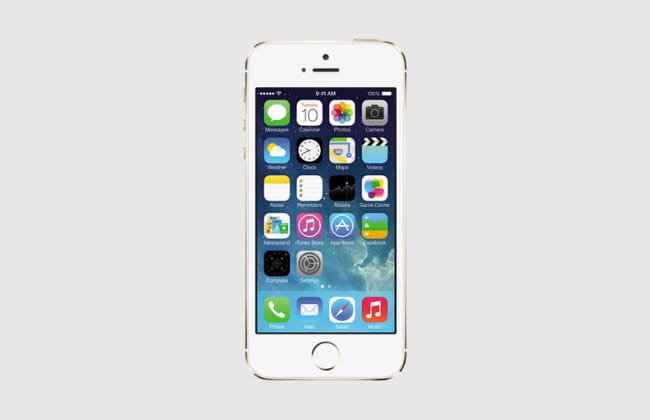
Release Date: September 20, 2013
Original Price: $199 to $399 with a contract
As the premium option in Apple's 5-series lineup, the iPhone 5S featured a number of firsts. The phone's A7 dual-core processor was the first 64-bit smartphone processor ever released. Apple's Touch ID fingerprint sensor also replaced the home button for the first time in iPhone history.
The iPhone 5S received plenty of praise. At All Things Digital, Walt Mossberg called it "the best smartphone on the market." Despite stock issues and delays of more than a week for online orders, the 5S eclipsed the 5C in terms of sales with CNet reporting that it was selling three times the units over the launch weekend.
iPhone 6 & 6 Plus (September 2014)
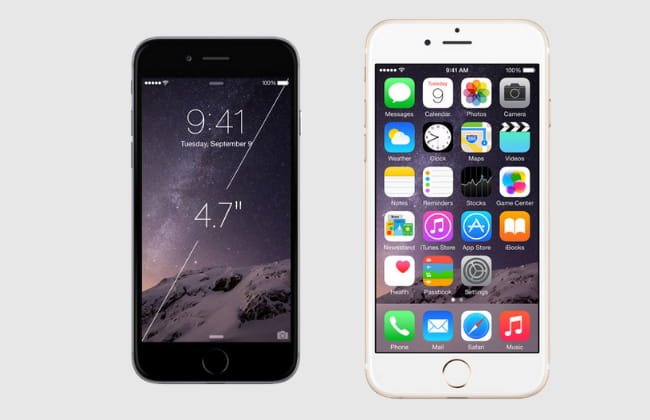
Release Date: September 19, 2014
Original Price: $649 to $949 without a contract
The iPhone 6 and 6 Plus represented the first two-tier release in the Apple iPhone series. The Plus was released in response to the increasing screen sizes in Apple phones. However, the 6 Plus wasn't just larger, it also included a superior camera compared to the 6 and an upgraded 1080p display.
The iPhone 6 faced a number of criticisms -- the largest being reports of the phone's aluminum frame bending in pockets. There were also issues with some cameras capturing wavy or blurry images. Eventually, Apple rolled out a repair program to fix affected cameras. Despite these issues, Apple sold more than 10-million iPhone 6 and iPhone 6 plus units in the first three days after their release.
iPhone 6S & 6S Plus (September 2015)

Release Date: September 25, 2015
Original Price: $649 to $949 without a contract
Like previous S releases before it, the iPhone 6S and 6S Plus provided subtle tweaks to the previous release. Apple responded to bending concerns from the previous model by reinforcing the chassis on the 6S. It also included a new pressure-sensitive touch input called "3D Touch" that is still present in the high-end iPhone releases of 2018.
Initial sales for the iPhone 6S and 6S Plus set yet another new sales record, shipping 13-million units in the first weekend of sales. However, with the rapid release of models and increasing availability of both Android and Apple smartphones, Apple saw its first-ever year over year decline in iPhone sales after the initial surge died down. Despite this, the phone received positive reviews.
iPhone SE (March 2016)
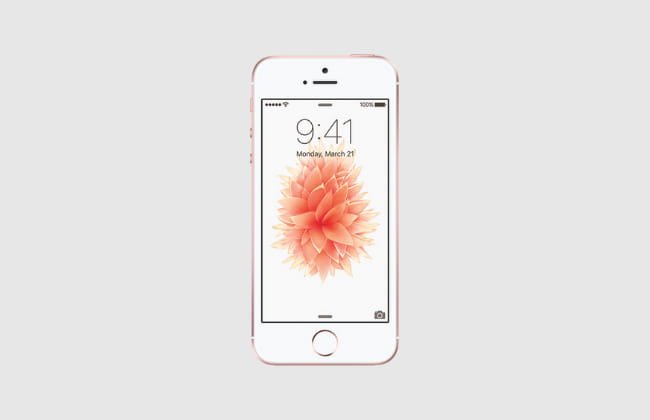
Release Date: March 31, 2016
Original Price: $399 to $499 without a contract
Apple released the iPhone SE (or iPhone Special Edition) to replace the nearly three-year-old iPhone 5C. Billed as a combination of the smaller screens of the 5-series iPhones and the power of the larger 6-series iPhones, the phone failed to break previous first-weekend records but received high praise from many tech outlets.
While the phones resembled a smaller version of the iPhone 6S, they lacked a few of the features present in their high-end siblings, including 3D touch, an updated Touch ID sensor, and a barometer. One year later, Apple released a new version of the iPhone SE with double the storage space at the same launch price.
iPhone 7 & 7 Plus (September 2016)
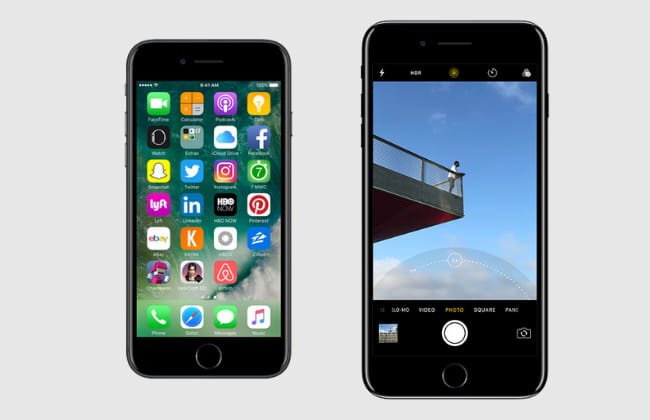
Release Date: September 16, 2016
Original Price: $649 to $969 without a contract
The release of the iPhone 7 and 7 Plus saw major changes to the hardware used in the iPhone series alongside minor design changes. These design changes earned the phone a water and dust resistance rating -- a first in the series. The Plus also included the first dual-lens camera in the iPhone lineup.
However, reviews were critical of one change -- the iPhone 7 was the first to remove the 3.5mm headphone jack, instead relying on a Lightning-to-3.5mm adapter. Apple did not report sales figures for the 7-series. However, despite the headphone jack criticisms, carriers reported that the phone sold well -- both in the US and abroad.
iPhone 8 & 8 Plus (September 2017)

Release Date: September 22, 2017
Original Price: $699 to $949 without a contract
While the iPhone 8 and 8 Plus feature a similar design to Apple's previous release, they introduced a number of improvements to the already popular lineup. The display on both models offers Apple's True Tone technology -- a clever trick that adjusts display temperatures and brightness based on ambient lighting. The return of a glass back panel allowed Apple to add support for wireless charging as well.
While sales figures are not available, reviewers loved the iPhone 8, with Ars Technica calling it "a marvelous feat of engineering". In terms of performance, the A11 processor used in the iPhone 8 still outperforms many of Android's 2018 high-end phone lineup.
iPhone X (November 2017)

Release Date: November 3, 2017
Original Price: $999 to $1149 without a contract
The iPhone X represents one of the most drastic design shifts in iPhone history. It nearly eliminates all bezels on the display, instead housing the camera and sensors on the front of the phone in a notch at the top of the screen -- a choice reviewers still debate today. The phone was also the first Apple phone to use an OLED display.
This release marks the replacement of Apple's Touch ID with Face ID -- a facial recognition system powered by multiple sensors. In fact, Apple removed the home button completely, instead using gesture-based controls for common phone functions. Outside of the notch debates, the phone received positive reviews. However, it was retired only 10 months after its debut, making it the shortest-lived release in the history of the iPhone.
iPhone XS & XS Max (September 2018)
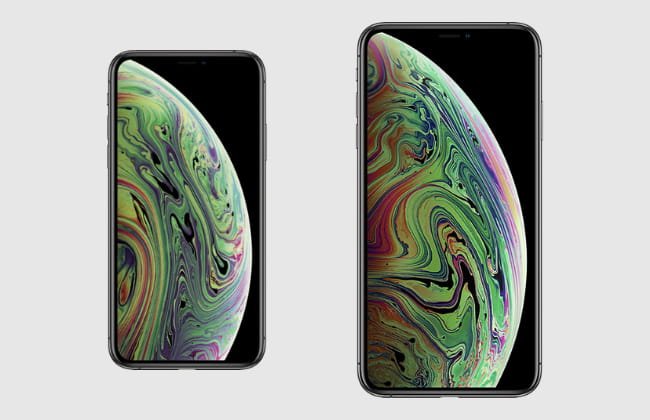
Release Date: September 21, 2018
Original Price: $999 to $1449 without a contract
The iPhone XS and XS Max keep with Apple's trend of releasing a smaller and larger variant of their high-end model each year. However, unlike previous years, the two phones are identical apart from display size. The XS Max is also the largest iPhone release to date with a 6.5-inch Super Retina display. Both models were also the first iPhone models to achieve an IP68 dust and water resistance rating.
Initial reviews on the phone were positive, though many outlets question if a smartphone is truly worth the price of some of the highest-end XS Max variants. While sales figures are not available -- and a charging issue raised questions near the launch of the phone -- reports from carriers indicate sales on the latest release are solid.
iPhone XR (October 2018)
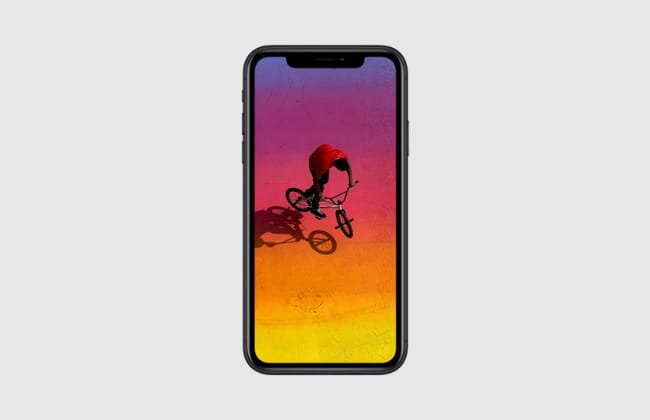
Release Date: October 26, 2018
Original Price: $749 to $899 without a contract
As a smaller version of the iPhone XS, the iPhone XR sits in an odd place of replacing the budget-minded iPhone SE in Apple's lineup. But it does so at nearly twice the price of the older model. Still, reviewers consider it one of the best phones ever released by Apple and many even recommended it over it's larger -- and pricier siblings.
The XR brings back a range of color options reminiscent of the iPhone 5C. Apple also claims it has the longest battery life of any iPhone release to date. While sales figures are unavailable, reviews and carrier reports indicate that the phone will continue Apple's streak of popular releases.
iPhone 11 (September 2019)
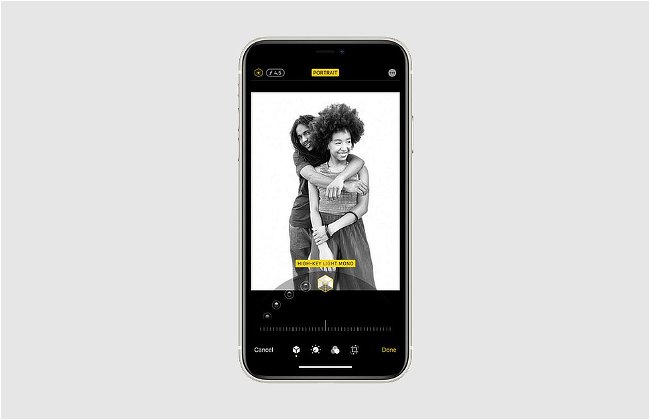
Release Date: September 20, 2019
Original Price: $699 to $849 with a contract
The iPhone 11 was mostly an iterative update to the previous iPhone. Notable improvements include support for 18-watt fast charging -- though a fast charger wasn't included with the phone -- and the new A13 Bionic processor.
Reviewers liked the phone but found the screen less impressive than previous years with the standard iPhone 11 using an LCD panel.
iPhone 11 Pro & 11 Pro Max (September 2019)
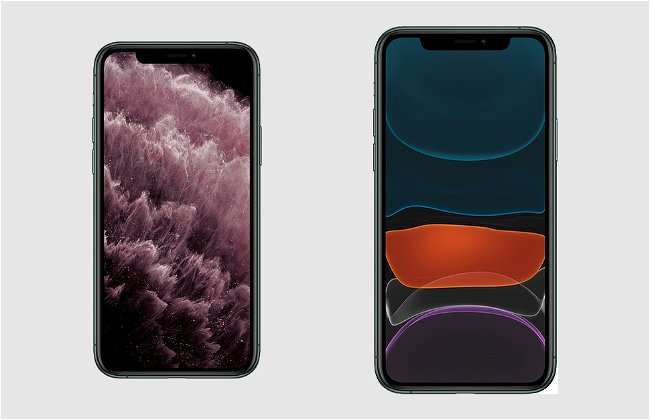
Release Date: September 19, 2019
Original Price: $999 to $1449 with a contract
The iPhone 11 Pro and 11 Pro Max were the first phones to receive a "Pro" designation. This was typically reserved for their larger, productivity-focused iPad models.
Notable changes from the iPhone 11 include the first triple-camera system on an Apple phone, included fast charging chargers, and the OLED displays found on only a few iPhone models.
Overall, reception for the phone was good. However, many reviewers questioned if the phones were more -- both in terms of cost and performance -- than the average person needed.
iPhone SE (2020) (April 2020)

Release Date: April 24, 2020
Original Price: $399 to $549 with a contract
The iPhone SE 2020 saw Apple bring back one of its most popular releases of all time. Predictably, the smaller, more affordable phone was a smash hit with reviewers.
While it didn't include the OLED displays of the iPhone 11 Pro series, it packs the same chart-topping A13 Bionic processor. Also of interest, while the iPhone SE (2020) was one of the smallest top-end phones in early 2020 it's still a full 30% larger than the original iPhone SE -- highlighting trends for bigger and bigger phones.
The phone only includes a single lens camera, but reviewers were impressed with how the camera used software tweaks to create images with rival many top-end phones.
iPhone 12 & iPhone 12 Mini (October 2020)
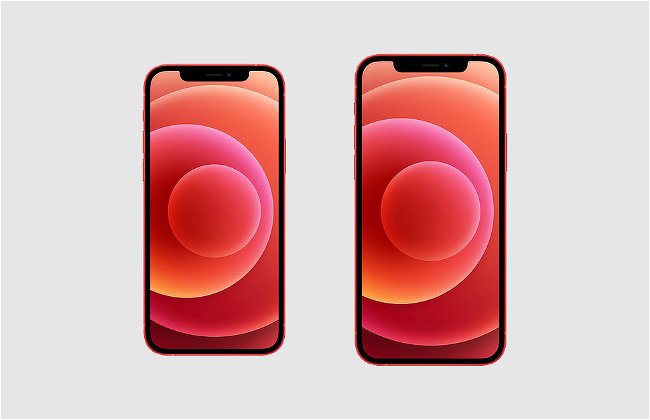
Release Date: October 16, 2020
Original Price: $699 to $949 without a contract
The launch of the iPhone 12 saw a new blockier phone design while continuing to offer a fun range of colors (similar to the iPhone SE or iPhone 5C of earlier generations.) It also marked the first release where every phone in Apple's lineup now included an OLED display, the introduction of 5G support to the iPhone lineup, and the debut of Apple's MagSafe technology for cases, cords, and other accessories.
Reviewers found the iPhone 12 mini an interesting alternative for people looking for a smaller iPhone option without the performance and feature sacrifices of the iPhone SE (2020). Overall, it launched to rave reviews with battery life the only concern for reviewers.
iPhone 12 Pro & iPhone 12 Pro Max (September 2013)
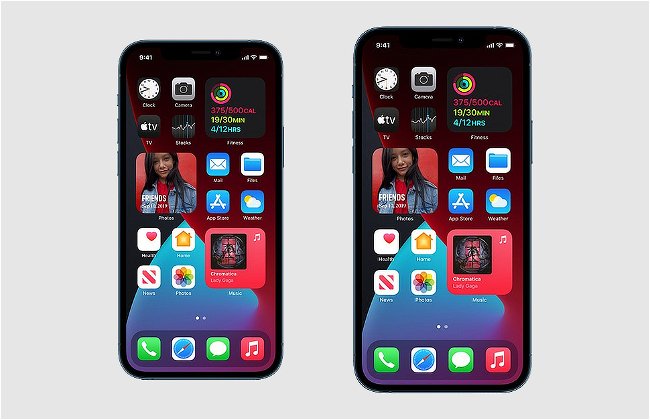
Release Date: October 16, 2020
Original Price: $999 to $1399 without a contract
The iPhone 12 Pro and iPhone 12 Pro Max share a number of similarities with the standard iPhone 12. Unlike some of the previous generations, there is little difference in the overall processing power or baseline camera technology.
However, both phones offer larger screens and the camera tech comes with a few new perks -- some software related and some in the hardware itself. The most prominent change is support for Apple's new Apple ProRAW image format. This combines Apple's advanced software processing with the flexibility of a RAW capture to allow photographers to enjoy the best of both untouched and optimized image capture in one format. While previous phones allowed for RAW capture, they all bypassed Apple's image processing software when doing so.
The iPhone 12 Pro Max also includes optical image stabilization while both the Por and Pro Max include a Lidar sensor for improved depth sensing. Both make it one of the most capable iPhone releases yet for low-light and night photography.
As with the baseline iPhone 12, reviewers noticed issues with battery life when connected to 5G. Otherwise, the chief criticisms revolved around whether the phone brought enough differences to be worth the added price.
The Future of the Apple iPhone
While the latest iPhones are some of the most expensive mobiles phones ever released, they're also at the top of charts for nearly every feature and consideration.
The switch to OLED allows Apple to compete with the visuals on offer from popular Android leaders -- like the Samsung Galaxy series. The A13 processor is the fastest mobile processor on the market, with the A12 coming in second.
And if there is one thing that Apple nails every time it's the premium feel of their phones. Whether you love or hate the notch, the phones look good.
So where does that leave Apple room to innovate and improve the iPhone in the future?
Here are a few key areas iPhone might focus:
- Resolution: While still some of the best-looking displays on the market, Apple could consider a push toward 4K -- particularly with their larger models.
- In-display Touch ID: Many companies are reportedly working on embedding fingerprint scanners under the displays of their phones. Adding Touch ID back to the iPhone might provide flexibility without sacrificing the new nearly bezel-free design.
- AI: While Siri is already one of the most popular AI-powered voice assistants around, the ability to include dedicated phone processors for AI tasks will further expand the capabilities of these systems. Expect Apple to continue improving their offerings in this area.
[1] Wikipedia : iPhone
[2] iMore : History of iPhone 5: The Biggest Thing to Happen to iPhone
[3] T3 : History of the iPhone 2007–2017: The Journey to iPhone X
[4] iMore : History of iPhone: From Revolution to the Next Big Thing
[5] History Cooperative : The History of the iPhone
[6] Fortune : A History of the iPhone
Disclosure: You should know that in some cases, we may receive a referral fee (at no additional cost to you) for products purchased through the links on our site. These links help support our work but they do not influence our content. Our editorial recommendations are always genuine and we try to feature only the best products and services. Why trust us?






